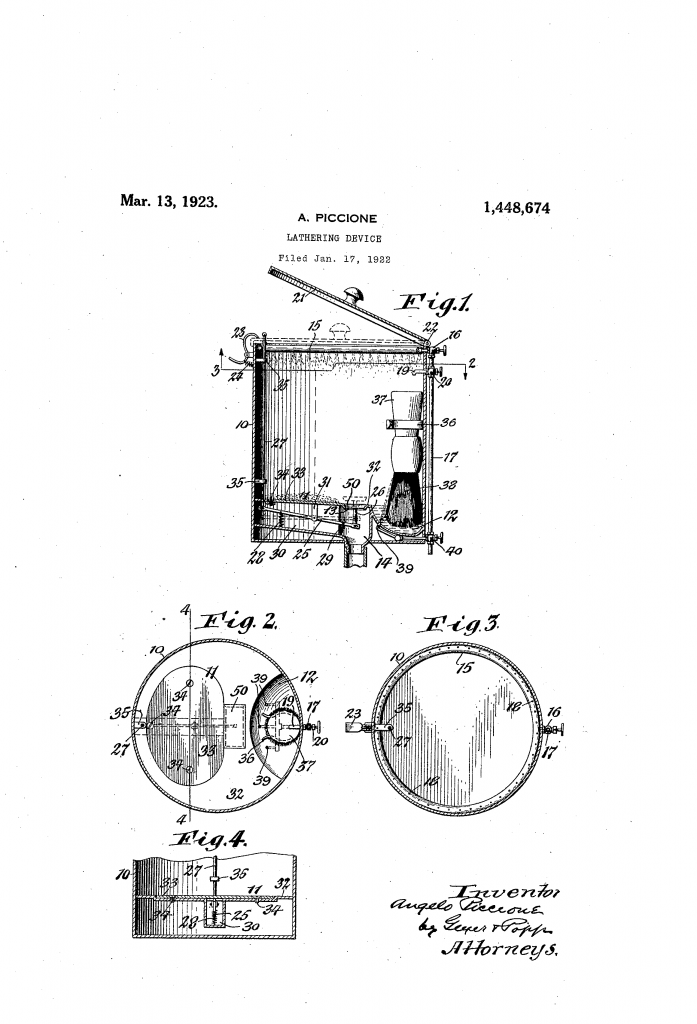The stationary – as in bolted down – shaving cup was not Angelo Piccione’s1 first foray into making an overly complex self cleaning lathering cup. Six years before the stationary cup he filed a patent for a, well, lathering device. The objective is more or less the same as his later lather cup. In the words of the patent text:
This invention relates to lathering devices for use by barbers to produce lather for shaving purposes, and has for its object the provision of a device of this character which permits of easily and conveniently cleaning the cup and brush after each shaving operation and thus render the same more sanitary as well as facilitating the work of the barber.
From US Patent 1,448,674
I can see how the stationary shaving cup developed from his 1922 patent. At the same time, there are features of the lathering device patent I don’t find in the patent for the stationary cup.
The lather device patent description

Like the stationary cup, the lather device is supposed to be hooked up to hot water and the drain. It also had a manifold around the top, for spraying the inside with hot water. And it had a semi-automatic drain valve for dumping excess water and lather. Beyond that, there is much that is different.
For starters, it’s bigger. Way bigger. Judging by the drawing, the device is at least 15 cm tall and about the same width.2 Secondly, whereas the later invention made sure to flush all the water out, the lathering device maintains a small amount of water so the brush remains soaked all the time. And instead of having a small reservoir on the side to dip his fingers in, there is a tiny faucet just below the manifold.
There is three tiny valves on the outside of the cup. One for the annular spray, one for the tiny faucet, and one for giving the bristles an extra good soak. The whole thing is closed by a cover, so arranged that closing the cover opens the drain. The barber have to reach into the device to make lather on the bottom of the cup, while on the stationary cup his hand was outside the device the whole time.
Thoughts on the lathering device
Compared to the stationary cup, this looks much less practical. Much less hygienical too. The depression where the knot rests will never be properly drained, allowing all sort of germs and bacteria to have a field day. This is clearly the first version… had it been software, I would say this lathering device is barely out of alpha.
As usual, you can read the full patent on Google Patents.
Footnotes:
- Who was, at least in 1922, a subject of the King of Italy, residing at Buffalo, in the county of Erie and State of New York. In the 1928 patent filing there is no mention of his nationality.
- For those who prefer less logical measurements, it’s about 6″, 0.03 rods, 1/3rd cubit, or 0.0007 furlongs.
